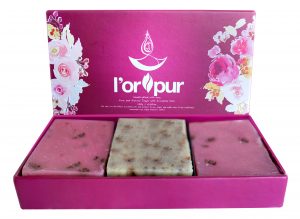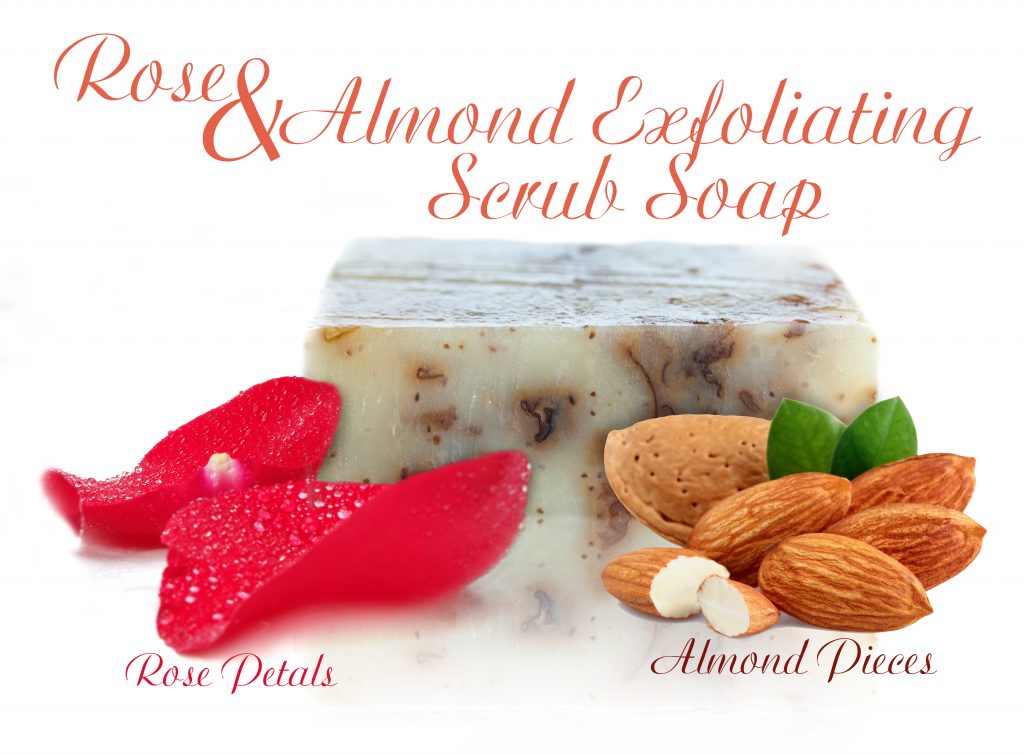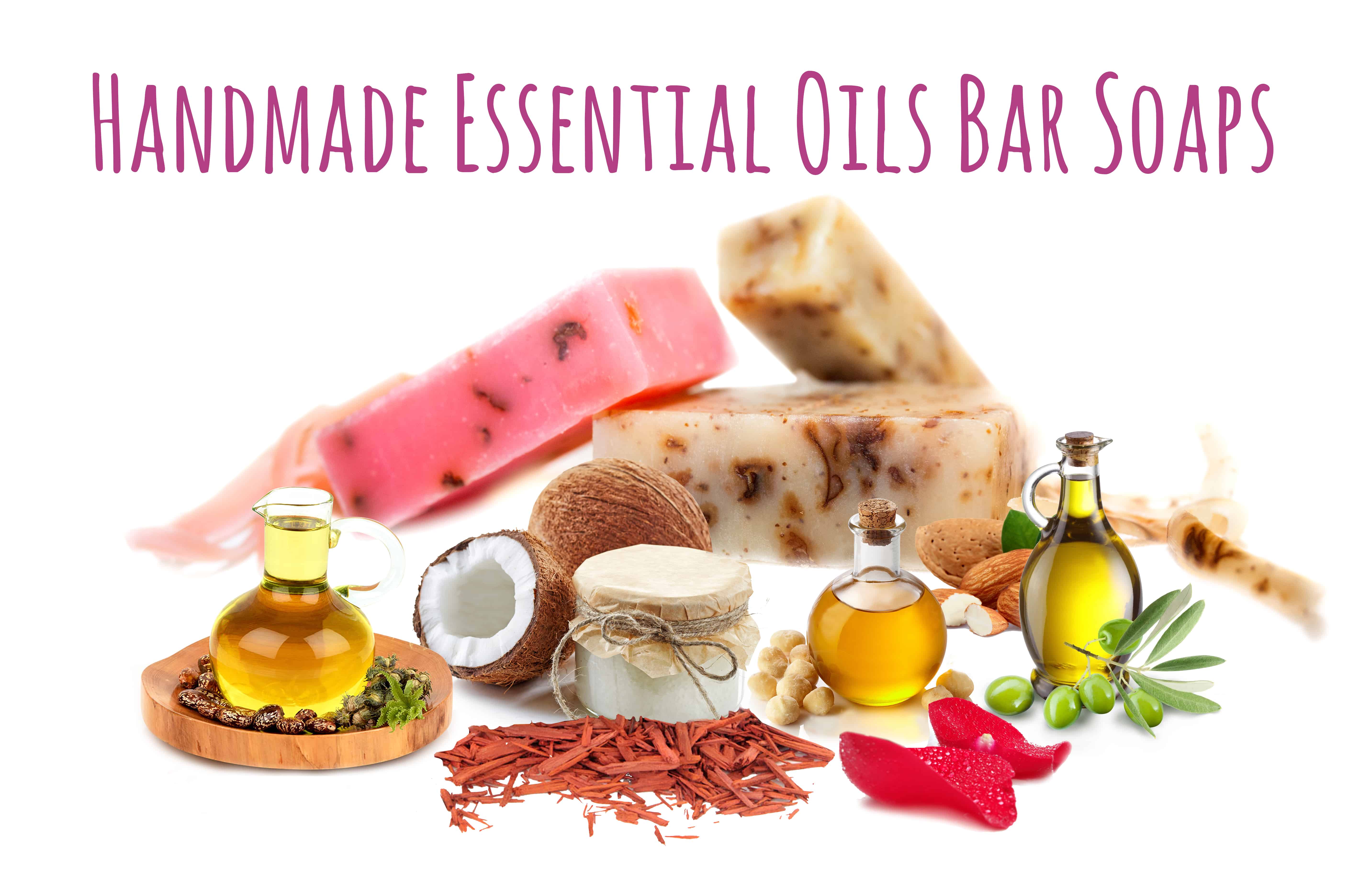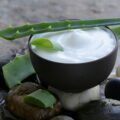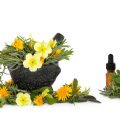Hundred bucks right now to the first person who tells me what soap is!
Yeah yeah, your answers are great, but I’ll be keeping my non-existent money. Why?
Because according to Google, the first definition of SOAP is actually Simple Object Access Protocol – a specification for exchanging structured info in computer networks.
And just in case you still feel that I owe you a hundo, the second definition for soaps is those voiced-over telenovelas that we all hate to love.
But none of those two reasons are why you’re here, right?
I’m guessing that while you wouldn’t mind a simple object to bath with, the last thing you want is for it to access your protocol while you’re at it. And as for the telenovelas, hey, even I wouldn’t mind showering with Carmelita and/or Alejandro (if they could only work it out). But that’s not what I’m here for. Today, we’ll be looking at the only kind of soap that will help you out positively in the shower.
I’ll be talking about good old bathing soap and all the wonderful benefits that it’s brought mankind since it was invented back in 2800 BC (That’s right, soap is older than Jesus).
I’ll also be exploring exactly what soap is, how it is made, and all the different kinds of soaps out there. I’ll then expose all the nasty secrets of the trade that commercial soap manufacturers would like to keep buried.
After this segment, you’ll never look at a bar of soap the same way again. Fortunately, I’ll also show you how to break the destructive chain by making your own soaps; using only healthy ingredients and safe processes that are actually geared towards better skin care instead of profit making or component recycling.
But first, why don’t you go on ahead and close all the other tabs you’ve got open, coz you just found the best resource out there that you’ll ever need for all your soap related queries.
What Is Soap And How Is It Made?
(I’ll defer this question to our resident nerd… Go ahead nerd, tell them what you told me.)
Chemically speaking, soap is simply a salt of a fatty acid. Cleaning and bathing soaps are obtained by treating regular animal or vegetable oils and fats with a stout base such as potassium hydroxide or sodium hydroxide (lye) in an aqueous solution.
The vegetable or animal fats and oils are composed of triglycerides, which basically means three molecules of fatty acids which attach to a single molecule of glycerol. So when triglycerides meet lye or sodium hydroxide, they undergo a process known as saponification. This just means that the fats hydrolyze and combine with the alkali to form what is known as crude soap; an amalgam of several soap salts, water, excess fats, alkali and one special ingredient known as liberated glycerol or glycerin…
(Well, why are you stopping? Keep going resident nerd; tell them exactly what commercial soap makers do to the glycerin. Don’t be scared; they can’t get to you here. Tell everyone exactly what these companies do to make an extra buck at their customer’s expense. Explain why we’re just sacks of skins to these guys and don’t you dare leave out any details.)
Alright, alright, alright. So when soap makers get glycerin as a by-product, there are two main paths that they can take. And that’s what separates good quality soap from all the other bad ones. See, commercial soap companies could leave the glycerin in their soap to act as a smoothing agent, but what do these guys do instead?
To save on production costs, most soap makers actually take out as much of the glycerol as they can and recycle it to make even more soap. But that’s just the tip of the conspiracy iceberg. To make their soaps stronger, foamier and more effective, big brand commercial soap corporations actually add chemicals and detergents that will wreak havoc on your skin in the long run.
So not only are the resulting soaps harmful to your skin and the environment, but they actively strip your skin of all its natural moisture and completely destroy its protective barriers. Not a pretty picture! You guys don’t even know the half of it; the exposure to UVs, the itching, the chaffing, all those skin issues…
(Wait, wait… don’t go resident nerd! Could you at least give us your list of the deadliest soap brands in America?) Well, there goes our scared nerd with all his valuable information. I guess we’ll never get to know more now. (Full disclosure – it was still me all along. Yeah, I’m the resident nerd; just enjoy talking to myself sometimes – don’t judge me.)
Now that you kind of have a general idea of what soap is and how it is made, it’s time to delve a little bit deeper into the actual process. Don’t worry; I’ll try not to bore you with too much jargon like nerd face over here.
The Soap Making Process
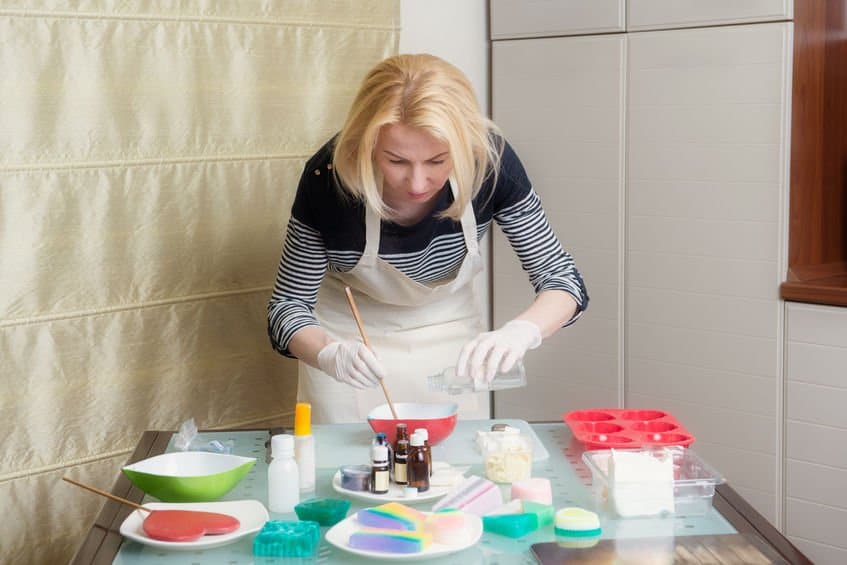
Since the earliest recorded evidence of soap-like materials in 2800 BC, man has been searching for a simple, yet effective cleaning substance since then. The production of soap remains a continuous process up until today. But to really appreciate how far we’ve come, it’s always fun to look at where we came from.
I’ve compiled and listed out all the different soap making processes that have been used since 2800 BC all the way to today. So buckle up guys, we’ll be leaping back in time to see how different people bathed (no peeping intended).
Earliest Soap Making Processes In History
Like I said, soap was invented way before people even started keeping a record of time. Earliest records have the ancient Babylonians creating their own formula in 2800 BC. Their formula for soap consisted of a simple mixture of water, alkali, and cassia oil. It was quite similar to the Egyptian method in 1550 BC which involved combining animal and vegetable oil with alkaline salts to create soap.
However, it’s the Ancient Romans of the first century AD that really take the cup. These guys would mix tallow from animals and mix it with some mystery ashes to create soap-like substances. But that’s not even the weird part; wait till you hear how the men used it.
The Roman’s preferred method of cleaning their bodies was by massaging the soap-like substance on their skin, chilling for a bit, and then scraping it away with strigil. It’s safe to say that 2000 years down the line and men have not changed much, am I right?
Modern Soap Making Processes
As I already mentioned, the industrial production of soap is a continuous process. Currently, there are three main methods or processes used in the manufacturing of soap. The first and most widespread is known as the cold process where the entire reaction takes place at room temperature.
The second is the semi-boiled or hot process where soap is made at near boiling point. And finally, there’s the purification or fully boiled process that industries love because it allows them to recover and recycle extra glycerol, alkali, and other substances.
Naturally, most soap makers prefer the semi-boiled or cold process because, in addition to being the simplest, these methods produce the highest quality soaps of all. Similarly, small artisans and hobbyists love these methods because they create some of the most beautiful handmade decorative soaps.
But what really separates handmade hot or cold process soap from your average industrial made bar of soap is that the latter doesn’t remove all the good stuff. Cold process soaps leave in excess fats and glycerol that not only act as moisturizing agents, but also make the soap more resilient to becoming mushy when wet. This means that the resulting soap is more skin-friendly and durable than standard commercial bars.
To show you exactly how the soap making processes can affect the outcome of your soap, let’s take an even closer look at the 3 different methods currently in use.
1. Cold Process Soap Making
This is hands down the most popular way to make soaps for handcrafters, artisans, hobbyists and for small scale use. The process requires mixing exact amounts of fats and lye at room temperature for saponification to occur. Now, while it’s known as the cold process, some heat might be required to melt the fat if it is still solid at room temperature. The lye is dissolved in water and then mixed with your choice of animal or vegetable fats and mixed until the two emulsify.
This can be identified by the thickening of the solution. At this point, most soap makers take the chance to add essential oils, fragrances and other emollient additives such as shea butter or jojoba. A little more stirring enhances the viscosity of the mixture even more.
The batch is then poured into preset molds, kept warm with thick materials such as towels or blankets and then left to continue with the saponification. After about 12 to 48 hours, the soap should be firm enough to remove and cut into bars. While the soap is safe to use at this point, most soap makers typically cure it for an additional month before use.
2. Hot Process Soap Making
In this case, soap makers apply a little amount of heat to encourage the saponification process and speed up the reaction. Unlike the cold process method where the reaction largely takes place in the molds, hot process soaps usually saponify long before they hit the molds.
Basically, the process involves mixing heated fats and hydroxide at a temperature of around 80 degrees Celsius until saponification is complete. Before modern tech, soap makers could identify the saponification point by taste or by look; and some still do.
The main advantage of the hot process is that you don’t have to know the exact amount of hydroxide required. However, some unscrupulous soap makers take advantage of the hot process by pushing it past 100 degrees and taking things to the final, industrial process.
3. Fully Boiled / Industrial Purification Process Soap Making
This is the most popular soap making method for pretty much all commercial and industrial soap manufacturers. The procedure starts off as the hot process, except in this case, the temperatures actually go above boiling point. Not only does this encourage the saponification to occur faster, but it helps them save on valuable mold space too.
The problem comes in when these industrial scale manufacturers take things one step further. By adding common salt and draining off any excess liquids, impurities and color compounds, these companies create a purer, whiter, and stronger soap.
However, other crucial ingredients such as glycerin are also completely removed for recycling purposes while detergents and chemicals are added to give the soap more cleaning strength and lather. That’s why it’s common for commercial soaps to strip your skin of all its natural oils and leave it feeling harsh, dry, and abused. What’s more, some of the ingredients used can be really harmful to the environment.
But then again, what do you expect from companies who are just trying to increase their overheads and make a fat profit?
It’s clear for all to see: anyone who loves their skin should stay as far away from big brand soaps as possible. It’s time to join the healthy clean revolution by going for all natural, handcrafted soaps that are actually made to heal and not to hoodwink.
Better still, why not make your own soaps using only natural ingredients and your favorite essential oils for that special touch? If you’re wondering just where to start your journey to wellness, stick around. Because I’ve got you covered with all the top ingredients for making your own soap and some recipes to help you put these soaps to good use.
Before we dive right into the handmade / handmade soap recipes, let me introduce you to Essential Oil Bar Soaps.
Essential Oil Bar Soaps
Essential Oil Bar Soaps offer superlative cleansing benefits with the added benefits of pure essential oils. So, what makes them better than your regular old bar soap or facial scrub? I’m glad you asked. For starters, essential oils are well known for their medicinal benefits and therapeutic properties.
So apart from just their exquisite fragrance, essential oils are able to blend well with other ingredients such as carrier oils and butters. Not only can a few drops of essential oil in your soap or scrub act as a disinfectant and germ killer, but these antiseptic properties are ideal for people trying to deal with their skin issues, such as acne, psoriasis, eczema, rosacea, etc.
However, one of the most incredible benefit of essential oil-based products has to be the ability to reduce wrinkles and fine lines and restore mature skin back to its previous elasticity and complexion.
Having said that, if you’ve been looking for something that will treat your skin like royalty, then I have the perfect product for you.
Introduction To L’orpur Essential Oil Bar Soaps
Why Essential Oil Bar Soaps? Because I wanted to re-invent the idea of beauty soaps for each one of us on planet Earth!
I have spent hours and hours trialing and testing pure essential oils blended with the highest quality carrier oils, which are then combined with creamy Shea butter to create premium quality Essential Oil Bar Soaps.
L’orpur Essential Oil Bar Soaps are natural, have no nasty chemicals and are anything but drying! They smell like you could bite into it; but of course, don’t as it is for washing with, not eating!
Which Essential Oils Have Been Used In L’orpur Soaps?
I’m sure you’re eager to know which essential oils I’ve picked for the soaps, so I’ll cut the chit chat. They are the world’s 2 most exclusive and expensive essential oils, rose and sandalwood, more specifically, Bulgarian Rose and Indian Sandalwood.
You’ll receive 2 bars of rose & sandalwood soap and 1 bar of rose & almond exfoliating scrub soap. So what is the fuss all about?
1. Rose & Sandalwood Soap With Natural Rose Petals
Growing up, most of you probably heard your grandma talking about their age-old, tried and tested skin care tips. Sure, all these may seem obsolete to you, but you’d be surprised just how accurate their advice usually is.
From the Amazon rain forests all the way to the Indian villages, some plants have been working medical wonders for centuries. And I’ve put the best ingredients to the test to make this Rose & Sandalwood Soap.
So, what makes this soap worth trusting your skin with? Let’s break down the ingredients and the properties of the soap.
L’orpur Rose – Sandalwood Soap contains expertly blended rose petals to help cleanse your skin pores. Let’s check some of the other wholesome ingredients:
Ingredients:
- Saponified Extra Virgin Olive Oil
- Saponified Castor Oil
- Saponified Coconut Oil
- Saponified Shea Butter
- Rose essential oil
- Sandalwood essential oil
- Rose petals
- Vitamins and naturally-derived extracts
Trust me, you’ll feel the difference after just one shower.
***Following completion of the saponification process, the lye changes into soap and glycerin. There is no lye present in the finished l’orpur essential oil bar soaps.
Rose Essential Oil
Throughout history, Rose oil has been used as a healing tonic and in the ancient art of aromatherapy. However, it’s also one of the most expensive essential oil on the planet. Why?
Well, the truth is that rose petals don’t really have much when it comes to oil content. As a result, it takes a couple thousand pounds of rose petals to produce just a few grams of this precious, valuable and health packed oil.
Rose essential oil has antibacterial, antiviral, astringent, antiseptic, and therapeutic properties; all of which not only make it ideal for skin care, but also for treating and disinfecting minor cuts and scrapes.
Rose oil also contains a compound known as Farnesol that helps eliminate bacteria and help with rejuvenation and regeneration of new skin. What’s more, it contains anti-bacterial properties that help target bacteria associated with acne and other skin conditions. So in addition to getting treatment for pimples and blemishes, you also get protection from future flare ups.
And lastly, all you lonely hearts will be glad to hear what Rose essential oil can do for you. According to myth and legend, Egyptian Princess Cleopatra was known to have taken aromatic baths using plenty of rose petals to help entice her all too willing lovers.
That’s right, Rose oil is thought to enhance feelings of love, compassion, devotion, and lust as well as stimulate the libido and increase feelings of sexual desire. Combined with all the above benefits, what more could you want in a bathing soap?
Sandalwood Essential Oil
When it comes to skin-friendly cleansing properties, Sandalwood oil is no stranger to many. Thanks to the oil’s anti-inflammatory, sedative, antiseptic, antimicrobial, antispasmodic and antibacterial properties, Sandalwood makes for a well-rounded, skin care solution.
The aromatic Sandalwood helps return moisture to dry skin, treat acne as well as lighten up scars and stretch marks all over the skin. What’s more, the oil is famous for its powerful anti-aging benefits that keep skin looking as young and as tight as ever. Sandalwood essential oil also offers relief for itchy skin, removes tanning and contains antioxidants that all make it the ideal ingredient for a super soap.
More About L’orpur Rose Sandalwood Soap
Apart from the above essential oils, this bar of soap also contains extra virgin olive oil, castor oil, coconut oil, Shea butter and vitamins. All these ingredients work to keep your skin in peak condition and moisturized all day long.
The Rose & Sandalwood Soap may feel like a glycerin soap to the touch, but it actually lasts much longer and smells divine. The soap has a sweet scent with whiffs of rose petals and earthy sandalwood.
The soap lathers extremely well and cleanses the skin providing all the moisture and protection you need so you won’t necessarily have to use lotions and moisturizers when you’re done bathing.
2. Rose & Almond Exfoliating Scrub Soap With Crushed Almond Pieces
Don’t give me that look! Man or Woman; a body is a body, and they all pretty much work using similar dynamics. So just in case you think you don’t need an exfoliating scrub, let me convince you otherwise!
Just like the skin cells on your head and face, the ones on your body also need to shed to make room for new, stronger and healthier skin underneath. But as the years go by and we’re no longer bubbling youth, this shedding process slows down and becomes less and less effective.
Sure, bathing regularly helps get rid of those dead, clingy skin cells. But if you’re really looking to give this natural process an even more natural nudge, then the L’orpur Essential Oil Almond Exfoliating Scrub Soap is the safest and most efficient way to do so. It contains natural crushed almond pieces which act as natural exfoliators, whilst the rose petals help cleanse your skin pores.
The Rose Almond Exfoliating Scrub Soap works like a double edged sword when it comes to skin care. For starters, the exfoliating granules made up of tiny crushed almond pieces slough off the dead skin cells as you massage the scrub all over your body. This rubbing action stimulates the muscles and boosts blood circulation to the skin’s surface which is akin to providing nutrition to the skin.
But that’s not even the half of it; L’orpur’s Rose – Almond Exfoliating Scrub also cleanses and moisturizes your skin and gently buffs away dry, dull skin while cleansing the body to even skin tone to reveal a radiant glow. The rubbing action itself boosts circulation and helps drain your lymph nodes, by increasing blood flow to the skin’s surface. Anyone mention deep cleansing…
Another important benefit of using a scrub is how merry you feel at the time. The refreshing crushed almond texture against your skin and captivating rose scent that fills the shower as you scrub simply lets you enjoy the moment as it’s happening. Talk about an aromatherapy double whammy!
Let’s check out some of the ingredients in the L’orpur scrub.
Ingredients:
- Saponified Extra Virgin Olive Oil
- Saponified Almond Oil
- Saponified Coconut Oil
- Saponified Macadamia Nut Oil
- Saponified Shea Butter
- Rose essential oil
- Rose petals
- Vitamins and naturally-derived extracts
***Following completion of the saponification process, the lye changes into soap and glycerin. There is no lye present in the finished l’orpur essential oil bar soaps.
Ingredients in the Rose Almond Exfoliating Scrub Soap
Having already looked at all the incredible benefits of Rose essential oil, you already know what to expect. In addition, Rose essential oil promotes circulation, reduces blood pressure and helps to cure headaches amongst others.
Other ingredients include extra virgin olive oil, almond oil, coconut oil, macadamia nut oil, Shea butter and vitamins that all work to cleanse, heal and moisturize your skin all while making you smell great.
Benefits Of The Other Ingredients In L’orpur Essential Oil Bar Soaps
- Extra Virgin Olive oil – widely used in skincare products due to its Vitamin E content, olive oil nourishes and leaves a protective barrier on the skin. It draws moisture to the skin whilst allowing normal skin functions to take place; also combats the premature effects of aging.
- Almond oil – has been referred to as the ultimate moisturizer. Due to its high Vitamin A and E content, almond oil is extensively used in skincare products and as a beauty aid. It is an outstanding emollient, locks moisture into the skin and gives dull and dry skin a smooth and silky feel.
- Castor Oil – soothing and moisturizing, castor oil acts as a humectant to draw moisture to the skin and gives a rich creamy lather to soaps. Castor oil also helps with eczema, psoriasis, shingles, chapped skin and burns.
- Coconut Oil – due to its high antioxidant properties, coconut oil helps with wrinkles, sagging skin, premature aging and dry and flaking skin. It has emollient and healing properties and helps with psoriasis, eczema and dermatitis and is used in soaps to produce a nice fluffy lather.
- Macadamia nut oil – other than jojoba oil, macadamia nut oil is the closest match to the natural sebum secreted by human skin. It contains Vitamin E and Omega 6 and is used to protect against premature aging and wrinkling and to hydrate the skin and hair. It is also useful for the treatment of acne and for people with dry and sensitive skin.
- Shea Butter – exceptional emollient with lovely healing properties, Shea butter’s soft buttery texture absorbs easily into the skin and nourishes it with Vitamins A, E, and F. It also helps to prevent premature wrinkles, fine lines and helps with rough and dry skin and ideal for burns, wounds and sunburns.
- Sodium Hydroxide (Lye) – The saponification process transforms the premium carrier oils into pure Essential Oil Bar soaps. Every single bar soaps on the planet are made with it. Our formulation ensures a mild outcome gentle on your skin.
- Essential Oils – 100% pure organic essential oils are used in our soaps for their healing properties.
8 Handmade / Homemade Soap Recipes Using Essential Oils
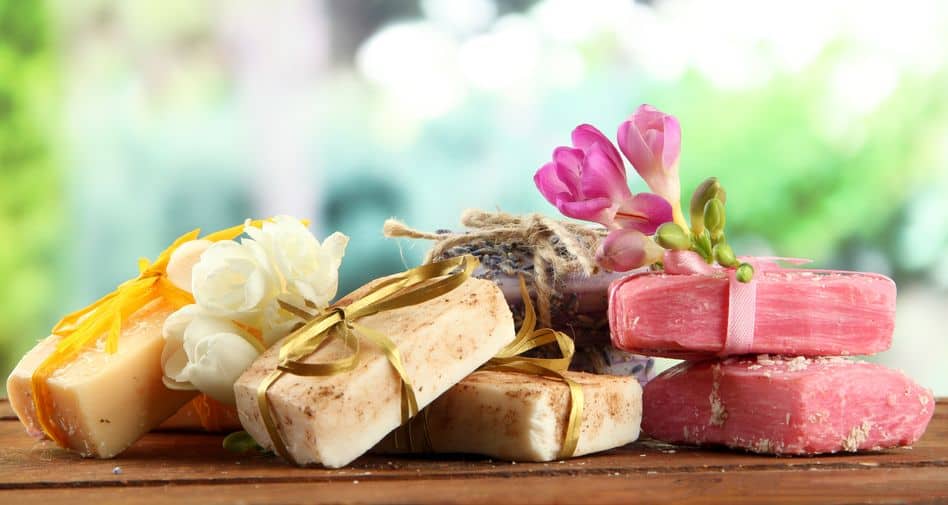
1. DIY Handcrafted Soap
L’orpur Essential Oil Bar Soaps are all handmade soaps. Simply put, handmade or handcrafted soap is soap in its purest and truest form. All you have to do is mix a couple of ingredients and take advantage of the tried and tested cold process method.
As earlier mentioned, this involves mixing fixed vegetable or animal oils such as olive oil or coconut oil with sodium hydroxide and waiting for saponification to take place. These soaps are the exact opposite of commercially produced factory soaps and come with an array of advantages. Apart from using only natural ingredients, hand making your own soap gives you control over each and every ingredient.
Benefits of Handcrafted Soap
This is the path to take if you’re sick and tired of being taken for a ride by commercial soap manufacturers. We’ve already seen how these companies save money by draining every ounce of skin-nourishing glycerin for their soaps to add to other products. But that’s just the half of it; to make their soaps even more effective, the companies add detergents and other harsh chemicals that strip your skin of all its natural oils. Similarly, the additives injected to preserve shelf life and improve lathering often cause dry, itchy and irritated skin.
Handcrafted or handmade soaps, on the other hand, contain thrice the benefits of commercially produced soaps and virtually none of their limitations. Composed of the finest, purest and high-quality vegetable and essential oils, handcrafted soap gently cleanses out your skin without stripping away at all your natural oils.
As a matter of fact, the excess glycerin after saponification is left in these soaps to help in returning and maintaining moisture on your skin. And unlike almost every commercially made soap, there are zero detergents, no harsh chemicals, no additional lathering agents and no preservatives in handcrafted soaps that can cause harm to your skin.
Hand And Body Handcrafted Soap Recipe
- 1 cup coconut oil
- 1 cup olive oil
- 1 cup almond, sunflower or grapeseed oil
- Half cup lye or sodium hydroxide
- Cup of cool water
- 20 drops rosemary essential oils
- 10 drops peppermint oil
- Choice of 5 drops lavender, frankincense or sweet orange essential oils (optional)
Method – Pour the lye slowly into the water and stir as you go. Watch out for the fumes, and stand back to avoid them. In another jar, mix your essential oils with the other carrier oils and then add the lye and water mixture slowly. Keep stirring until the mixture lightens up in color and becomes thicker. At this point, you can add any other fragrances or essential oils and pour the mixture into your molds. Allow for up to 24 hours for the handcrafted soap to cool and firm up.
2. Castile Soap
If you’re going to start a conversation about natural living, chances are that it involves castile soap. This all-natural and incredibly versatile soap can replace many if not all your industrial and commercially prepared detergent cleaners that are full of chemicals. Its uses range from lathering up in the shower all the way to cleaning grit and grime all over your house, making this particular product a household staple for environmentally conscious people everywhere. But what exactly is castile soap and how can you use it?
What is Castile Soap?
Named after the one and only Castile region of Spain, castile soap traditionally referred to hard white soap that was primarily olive oil based. Today however, the term is used to loosely define most pure vegetable soaps without any animal products. The vegetable oil can either be mixed with sodium hydroxide to make soap bars or with potassium hydroxide to make liquid soap.
The great thing about castile soap is that when it is combined with water, it creates free floating charged atoms that work well to attract and capture dirt and other non-soluble molecules. This gives castile soap some pretty impressive grease-grabbing qualities that are useful for cleaning greasy utensils, oil spills, kitchen slicks, and pretty much everything else.
Popular Castile Soap Recipes
Recipe 1 – Homemade Hand Soap
To make this, simply fill a soap dispenser with distilled water all the way to halfway and add liquid castile soap to fill up. Add 6 drops of Tea Tree essential oil for antibacterial properties and 3 drops Lavender for its relaxing fragrance.
Recipe 2 – Castile Face Wash
Mix half a cup of Castile liquid soap with a pint of distilled water and add 5 drops of Frankincense and Tea Tree. The properties of these essential oil will also help fight acne and reduce bacteria.
3. Goat Milk Soap

Most people still use soap made with water to wash their skin. However, there’s a new kid (pun intended) on the block by the name of goat milk soap. Simply put, this is soap that has been made with raw goat milk instead of water. This particular soap is great for people with dry or sensitive skin, acne, eczema, and psoriasis. So, what’s all the hype around goat milk soap?
Benefits of Goat Milk Soap
Alpha Hydroxy Acids – For starters, goat milk contains alpha-hydroxy acids such as lactic which help clear out dead skin cells from your surface. This leaves brand new cells on your skin surface that are smoother, shinier and younger looking. Water based soaps tend to use harsh chemicals to achieve what goat milk naturally does.
Vitamins – In addition to other nutrients, goat milk contains vitamin A which is necessary for repairing damaged skin tissue. Vitamin A has also been proven to heal skin, reduce wrinkles, control acne and offer relief for skin conditions.
Cream – As we established earlier, fats are a crucial part of making great soap. The naturally present cream in goat milk helps boost the moisturizing quality of goat milk soaps. That’s why this soap won’t strip your skin of moisture like many commercially produced soaps.
Minerals – Here’s where milk soaps stand head and shoulders above the rest. Goat milk contains important minerals such as selenium which is believed to play a crucial role in cancer prevention. This is a vital element to protect your skin from harmful UV rays.
Uses for Goat Soap
Homemade goat milk soap can be without question one of the most luxurious soaps you will ever use. Making your own soap at home can save you a ton of money and give you peace of mind knowing exactly what ingredients you have in there. Here’s one killer recipe.
Creamy Fresh Homemade Goat Milk Soap
What You’ll Need
- 100 grams lye
- 250 grams vegetable fat
- 300 grams olive oil
- 300 grams sunflower oil
- 100 grams bees wax
- 300 grams fresh goat milk
- 20 ml lavender essential oil
- 10 ml ylang ylang essential oil
Method – Add the milk to the lye and stir at room temperature. Combine this mixture with all the oils, stir and then pour into molds. The result will be a creamy milk soap with plenty of bubble lather and the irresistible aroma of lavender and ylang ylang essential oils.
4. Glycerin Soap
Easily recognized by their translucent nature, glycerin soaps are simply soaps that contain a very special component of fats and oils known as glycerol. The resulting clarity is usually as a result of the alignment of soap molecules that can also be induced using sugar and alcohol additives. These types of soaps are usually popular for artisans, hobbyists, and small scale soap makers. That’s because large scale and commercial soap manufacturers prefer to completely remove the glycerin for use in other areas.
Glycerin soaps are made by melting and continually heating soap that has been partially dissolved in alcohol. The alcohol is added to a slow cooked, hot process mixture and simmered with sugar until it achieves a jelly-like consistency. This is then chilled in a freezer to create glycerin soap. Handmade soaps differ from industrial in that the glycerin is still left over after saponification. So apart from being completely natural with no synthetic ingredients, what else makes glycerin soap worth all the effort?
Benefits of Glycerin Soap
Unrivaled Moisturizing Capabilities – We all know that glycerin is a humectant; meaning that it attracts moisture. Due to this reason, glycerin soaps attract moisture to the skin and keep it locked in for constant hydration. So unlike commercially produced soaps that leave your skin feeling dry, tight and flaky, glycerin keeps the skin feeling hydrated for hours. Using this soap regularly will leave your skin feeling soft and supple.
Great for Sensitive Skin – Since these types of soaps are completely natural, they are ideal for people with sensitive skin. Synthetic ingredients in industrial soaps tend to aggravate and irritate the skin. Glycerin soaps, on the other hand, can be used on even the most sensitive skin without irritation.
Homemade Glycerin Soap Recipe
What you’ll need
- Block of glycerin soap base
- 1 tsp liquid soap
- 1 tsp liquid glycerin
- 12 drops of rosemary, cedarwood, orange or lemongrass essential oils
- 1 tsp of olive oil, honey, coconut or another moisturizer
- 2-3 drops of desired food coloring
Method – Heat the glycerin until it becomes runny. Mix all the above ingredients thoroughly and stir until you notice traces. Pour into molds and let it cool completely.
5. Lye Soap
By now, you’ve probably come across the name lye a couple of times. So you already know just how crucial a component it is in the soap making process. But what exactly is this stuff and what makes it tick? We’ll get to that in a moment. But first, it’s interesting to note that lye soap was traditionally the ultimate, all-purpose cleanser for everything. From clothes and floors to dirty dishes and other surfaces, the soap excels greatly in these areas.
What is Lye?
Simply put, lye is a metal hydroxide traditionally obtained by leeching ashes with high potash content or any other strong soluble alkalis to produce caustic solutions. Today, however, it’s made using a process known as the membrane cell chloralkali process.
Word of Caution: It goes without saying, lye is a highly caustic chemical capable of causing some serious damage. Not only can it burn your skin and cause permanent blindness, but it can also cause death if ingested. And yet this dangerous chemical is largely responsible for the saponification process that results in good old soap. However, soap makers who use lye understand that the utmost precaution must be taken. This includes wearing protective glasses, gloves, covering your arms, legs and exposing as little skin as possible.
Benefits of Lye Soap
Superior Cleaning – Lye soap boasts of one of the most effective cleansing agents of all time. It excels at breaking down dirt and deconstruction grime. Whether you’re using it for the house, clothes, dishes or for bathing, lye soap does it all.
Natural Moisturizer – Thanks to the saponification method used in hot and cold processes, all the excess vegetable or animal fats are left in the lye soap. If you’re making handcrafted soap, then you’ll also want to leave in all the glycerin to create soap with incredibly high moisturizing capabilities.
Lye Soap Recipe
What you’ll need:
- 2 pounds of vegetable or animal fat (lard)
- Pure, filtered water
- 10ml patchouli essential oil
- 5 ounces lye
Method – Combine water and lye and wait for the solution to mix. Separately, combine the fat with your favorite essential oils (and a little bit of carrier oil if you wish). Pour the mixture into the water and lye solution and stir until it thickens. Pour into molds and allow for 24 hours to harden.
6. Oatmeal Soap
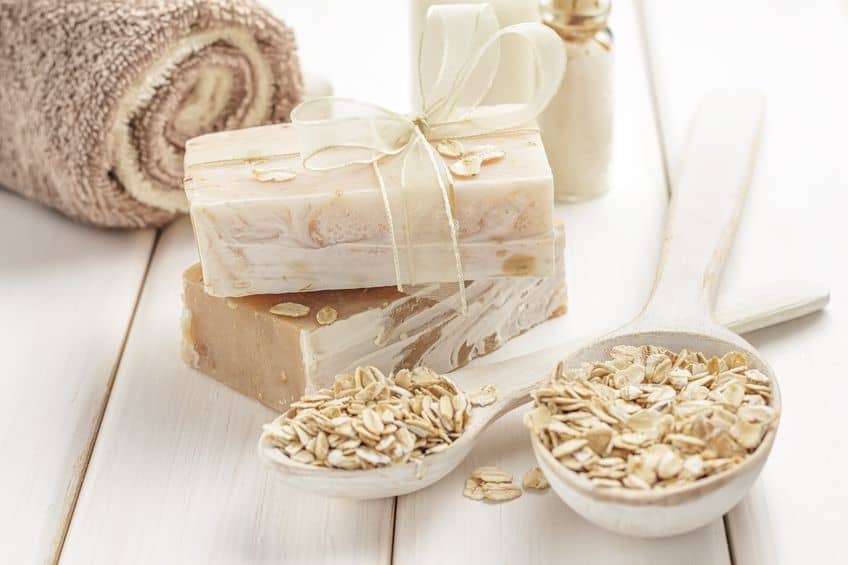
If you thought that oatmeal was only good for your stomach, then boy were you wrong. As a matter of fact, colloidal oatmeal has been long used as a common ingredient in many bath and skin products.
Similarly, anyone here who is not a millennial probably remembers how our moms and grandmas would use oatmeal for things like poison ivy, chicken pox, bug bites, and other skin conditions. The great thing about oatmeal soap is how easy it is to make. All you need is some soap, rolled oats and you’re all set to go. Apart from helping remove dead skin and preventing premature aging, oatmeal soaps have the following benefits:
Benefits of Oatmeal Soap
Soothes Itching and Skin Irritation – The reason why oatmeal is a home remedy for any skin related issues is due to its soothing properties. Oatmeal soaps are especially useful for suppressing the need to scratch brought about by insect bites, eczema, acne, sunburn, psoriasis, poison ivy, poison oak, shingles, and rashes, among others.
Oil Absorption
As a unique twist to the norm, oatmeal soap is known to absorb oil without over-drying the skin. This is a property that is extremely useful for people with excessively oily skin or acne prone skin. The oatmeal contains astringent properties that help draw out excess oils and moisture and restore the skin’s natural pH.
Homemade Oatmeal Soap Recipe
What you’ll need:
- 10 oz pure, distilled water
- 5 oz pure lye (sodium hydroxide)
- 15 oz olive oil
- 10 oz coconut oil
- 1 oz castor oil
- ½ oz eucalyptus, lavender, lemon or peppermint essential oil
- Half cup of oats
Method:
Pour your lye into a bowl and add water slowly while stirring. Mix all your essential oils and carrier oils separately and then add them to the water and lye solution. Stir rapidly until everything mixes and trace starts to form. Add your oats, pour into molds, and then wait for the soap to cool and solidify after a couple of days. Cure it for an additional 4 weeks to get the best quality oatmeal soap.
7. Shea Butter Soap
For most people, the use of regular soap tends to result in dry, cracked skin. Hey, nobody’s telling you to take fewer baths a day, but wouldn’t it be great to have soap that just won’t strip away all the good stuff? Soap that moisturizes and disinfects at the same time? If this sounds like you in the shower, then what you need is Shea Butter Soap; soap that will give you the perfect balance between taking and giving.
What is Shea Butter Soap?
Shea butter is a type of fat extracted from the nut of the Shea tree. It is derived from oleic and stearic acids and is popularly used as a lotion, moisturizer or salve in cosmetics. Interestingly though, shea butter is also edible; some people use it in the preparation of food such as chocolate industries who substitute cocoa butter with shea. When raw, it’s usually yellow in color, but it turns to ivory or white when refined.
Being organic, non-toxic and packed with a ton of healthy properties, Shea butter makes the ideal ingredient for emulsions, moisturizer creams, hair conditioners, and most importantly, soap. Shea butter soap is not only great for rejuvenating your skin and reducing the aging process, but it also helps with cracks, eczema, dermatitis, aching muscles. And clearing stretch marks and wrinkles.
Shea Butter Coconut Milk Soap Recipe
What You’ll Need:
- 200 grams Shea Butter
- 250 grams coconut oil
- 400 grams olive oil
- 150 grams castor oil
- 30 drops lavender essential oil
- 20 drops basil essential oil
- 150 grams lye
- 100 grams coconut milk
Method:
Mix your lye with cold distilled water slowly and stir. Mix the oils in a separate jar and apply some heat. Next, mix the lye and water mixture with all the essential oils, carrier oils, milk, fragrances and anything else you want in your soap. Stir until you get traces of saponification, pour into your molds. Cover the shea butter soap with plastic and let it sit for up to a month for best results.
8. Exfoliating Soap
Did you know that the average human generates a new layer of skin every 2 to 4 weeks? That’s almost as much as some snakes shed skin. Sounds insane right? But in our case, the shedding is much less subtle and conspicuous. See, much like the cells on your head and face, the cells on your entire body also require regular shedding to make room for newer and healthier skin. But as we age, this shedding process becomes slower and less effective. Sure, bathing regularly helps get rid of dirt and excess oils. But soap alone is not enough to remove all those dead, clingy skin cells. This is where exfoliating soap comes in to save the day.
What is Exfoliating Soap?
Exfoliating soaps are skin care products used to deep cleanse the skin, remove dead cells, unclog pores, encourage new cell growth and stimulate blood flow to the skin surface. As a result, you get to experience higher moisture levels and drastically reduced acne and breakouts.
Typically, exfoliating soaps contain granules that work by sloughing off the dead skin as you wash up. Rubbing these granules all over your body stimulates the muscles and gives a boost to blood circulation to your skin. But that’s not even the best part; exfoliating soaps also cleanse and moisturize your skin while also living up to their name at the same time. Some of these soaps are made with natural ingredients for granules such as sea salt, oatmeal, peach pits, brown sugar, seaweed. Crushed apricot pits, synthetic beads and pretty much any other exfoliates.
Exfoliating Herbal Homemade Soap Recipe
What you’ll need:
- Cup of clear glycerin soap base
- 2 tablespoons water
- 3 tablespoons carrier oil (coconut, almond, olive)
- 10 drops lemongrass essential oil
- 8 drops peppermint essential oil
- 6 drops orange oil
- Dry ingredients for granules (chia seeds, oatmeal, coffee, sea salt, ground fruit stones)
- Soap mold container
Method:
Cut the glycerin cubes and melt them in a microwave. Allow it to cool and then add all the oils, water, dry ingredients, fragrances and any other preferred ingredients. Mix intensely for about 10 minutes until you spot trace. Pour into mold and cure for a few weeks.
All Natural Soap
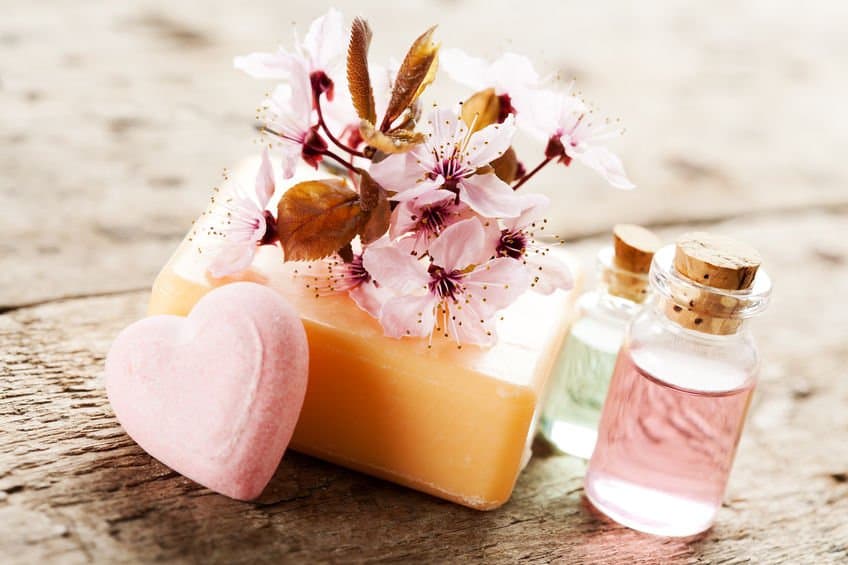
Having seen just how low some commercial soap manufacturers will sink to make a quick dollar, it’s no surprise that more and more people are now going for strictly, handmade, all natural soaps. It’s become somewhat of a norm how industrially made soaps strip your skin of all its natural oils and irritate sensitive skin.
If you’re sick and tired of commercially produced synthetic soaps that leave you feeling like a rape victim in your own shower, then it’s time to embrace the warm goodness of Mother Nature. But what exactly do these terms mean?
What is All-Natural Soap?
Let’s start with commercially produced soaps – they are packed with harmful ingredients such as parabens which are harsh chemical preservatives, phthalates which are actually carcinogenic, synthetic perfumes that can aggravate allergies and artificial coloring and dyes that have been known to cause numerous health problems.
On the other hand, the definition for all-natural is something that exists or has been caused by nature and not by mankind. So if your soap says all natural, then it comes wholly from plant, vegetable, mineral or animal by-products. These types of soaps stand out by their ingredients which not only refresh the skin, but also nourish it as well.
Typically, all natural soaps contain healthy oils, essential oils, and other organic, biodegradable ingredients. Some of the recipes will include lye, but you can also make all natural soaps using glycerine or another natural soap base and any of the above ingredients.
Why not try the L’orpur Essential Oil Bar Soaps which are all-natural handcrafted soaps which come in an exclusive gift box.
Parting Shot
There you have it guys, the plain, clean and naked truth about the soap industry. I’ve laid it out in the open for all to see. Looking back, it’s quite clear just how oblivious we’ve been about what we apply on our skins. But now, I hope you’ll all think twice before you trust any old soap with your body’s largest organ.
As a rule of thumb, it’s better to go for handcrafted soaps that are really made with your skin’s best interest at heart. Or better yet, why not make your own soaps so you can have full control over all the ingredients and have a little fun along the way?


